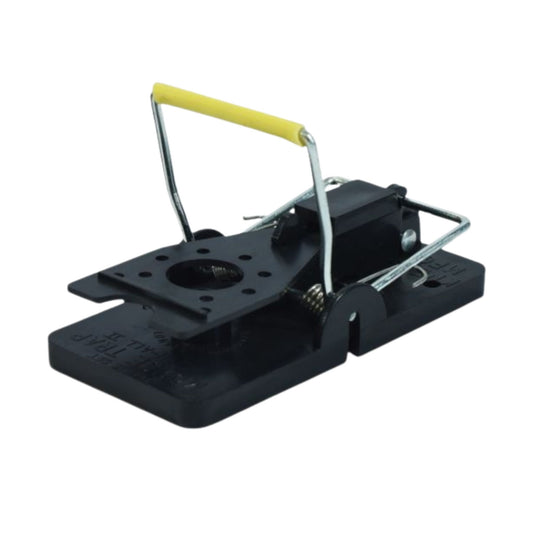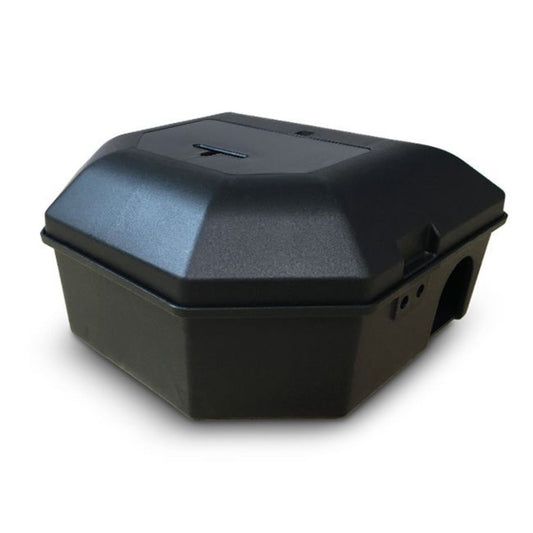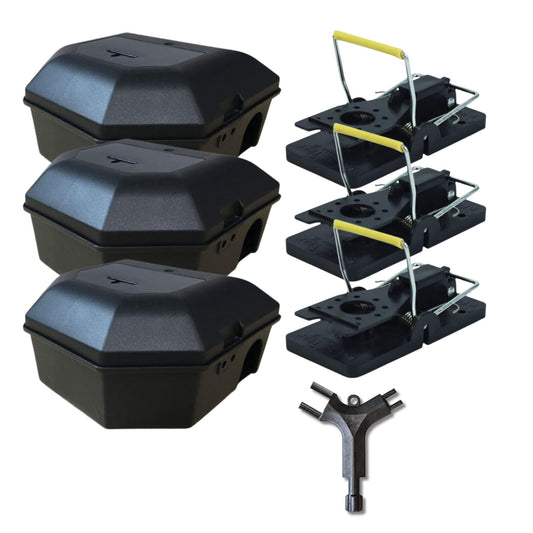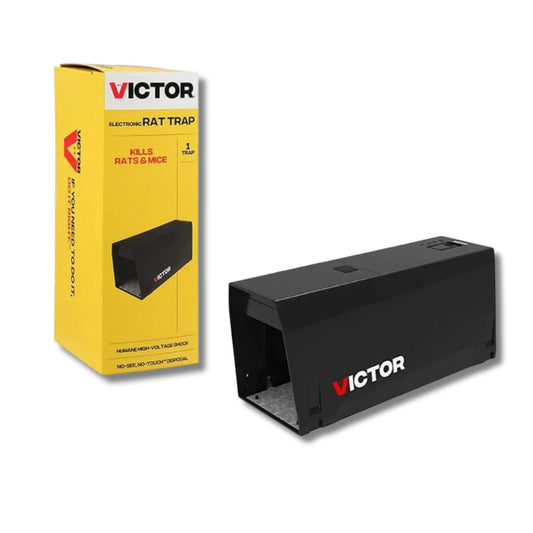
What to Do if You Hear Mice or Rats in the Walls or Floors
Share
Hearing scratching in the walls or under the floorboards? You’re not alone. Mice and rats are clever, quiet, and often go undetected until they’ve made themselves at home. The key is to act fast — before a few rodents become a bigger problem.
This guide will help you identify signs of a mouse problem, locate where they’re hiding, and show you how to get rid of mice or rats in your home — all with DIY-friendly methods that work.
Signs You Have Mice or Rats in Your Walls or Floor
Scratching noises, especially at night, are a strong sign of rodents. Other indicators include:
- Droppings along skirting boards, in cupboards or loft spaces
- Chewed food packaging or small gnaw marks
- Nesting material such as shredded paper or fabric
- Your pets reacting to hidden sounds or spaces

Why Rodents Get Into Walls and Floorboards
Rats and mice are drawn into homes and more specifically wall cavities, floor voids, and lofts because they’re warm, dark, and protected from predators. In terraced and semi-detached homes, they may also travel between properties via shared walls or joist voids.
No Gaps, but Still Hearing Mice and Rats? Here’s What That Means
If you can’t find any visible entry points, mice and rats may be moving through:
- Hidden voids under floorboards
- Behind kitchen plinths or bath panels
- Shared cavities in walls or lofts between properties
- Service risers or pipe runs in flats and conversions
In these cases, don’t wait for a visible hole — start proofing internally and target suspected runways with traps or bait stations. You may also want to speak to your neighbours to see if this is something you need to solve together.

How to Get Rid of Mice and Rats in Walls and Floors
a. Identify the Source
If there have been no sightings, try to pinpoint where the sounds are coming from. Sprinkle talcum powder or flour near floor-level access points and check for footprints or droppings.
b. Inspect for Entry Points
Check for entry points on both the interior and exterior of the home. Check around boiler flues, pipework, air bricks, behind appliances, and in the loft. Mice only need a 5mm gap to squeeze through and rats around 15mm. Take note of potential access routes, but don’t seal them yet — you’ll use these spots to place your control measures first.
If you seal off exterior access too soon, you risk:
- Trapping mice and rats inside with no exit, leaving them to die, decompose and emit a smell lasting for several weeks
- Making it harder for them to access bait or traps
- Encouraging them to chew new exit routes (into living areas)

c. Use Traps or Bait Stations Before Sealing
Before blocking anything, reduce the population with mouse traps, rat traps, and bait stations for added safety placed near entry points or other areas with evidence of activity. This ensures any rodents still inside have a chance to interact with control products instead of becoming trapped inside walls or floors.
Once you no longer hear scratching and signs of activity stop (including no trapped mice or rats) for a period of about 1 week, it’s time to proof your property properly.
d. Seal Gaps with Rodent-Proof Materials
After the control phase, it's time to rodent proof your home. Seal every gap you’ve identified using rodent proofing products such as steel wool, metal mesh, or rodent-proof fillers. Avoid using expanding foam alone as rodents can chew through it easily. By sealing after activity has stopped, you prevent new intrusions without risking odours or hidden carcasses.

Be Environmentally Responsible
Only use rodenticides approved for amateur/home use in the UK. Always follow the label, avoid placing bait near pets or wildlife and put the rodenticide in a tamper-proof bait station for safety. Never throw poisoned rodents in regular bins or compost.
Some professionals may advise against rodenticides, and we only recommend it as a last resort in this instance, as rodents often retreat into the wall before dying, leaving a messy and smelly problem.
For eco-conscious solutions, consider humane traps or mechanical options first which allow you to release the trapped rodents alive away from your home.
Long-Term Mouse Prevention Tips
- Keep all food (including pet food) in sealed containers
- Vacuum regularly and clean behind appliances
- Declutter lofts, sheds, and garages
- Trim plants near external walls
- Re-check for new gaps or signs every few months
When to Call a Pest Control Professional
If the scratching persists, or if you find signs of a larger infestation, it’s worth calling a pest controller. Professionals can use thermal cameras, smoke tests, and more sophisticated baiting strategies for harder-to-reach or multi-property infestations.
Final Word
Mice and rats may be small, but they can cause big problems if left unchecked. By spotting the signs early, acting with the right traps and blocking all entry points you can reclaim your home — safely and efficiently.
Need help getting started? Shop our full range of mouse control products and rat control products — everything you need to deal with rodents in walls, floors, or anywhere else they try to hide.
Hear scratching? Don’t wait. Start rodent-proofing your home today.
We go to great lengths to ensure that all our pest control products are effective, fast & easy-to-use. You may also find our expert mouse guide or expert rat guide useful if you want to learn more about getting rid of rodents from your home or business.






